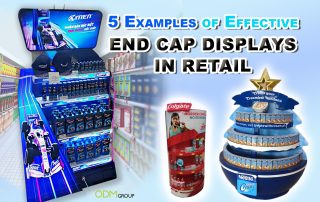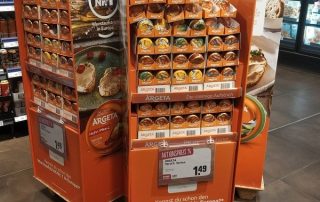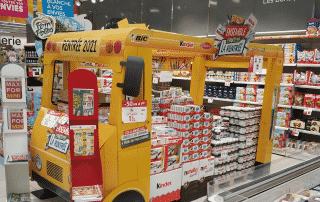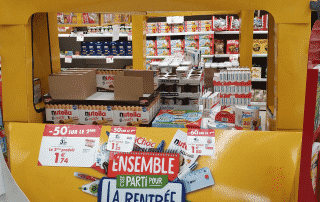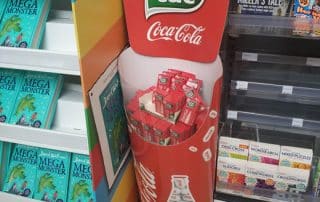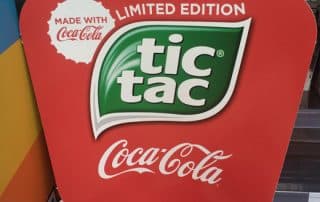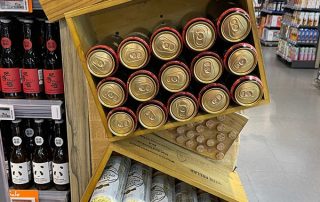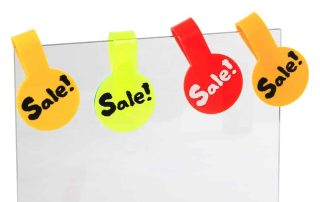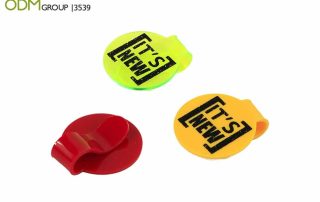A great brand manager knows that good custom shelf signs are important. It’s the silent salesperson, the guiding beacon, and the brand ambassador all rolled into one. Thus, a lot of brands innovate to come up with effective and creative retail sign ideas.
In this blog post, we will delve into the world of retail signage, exploring the elements that make it effective, the various types of signage, and the design principles that can help you create compelling and memorable in-store signage that increases brand visibility and boosts your business.
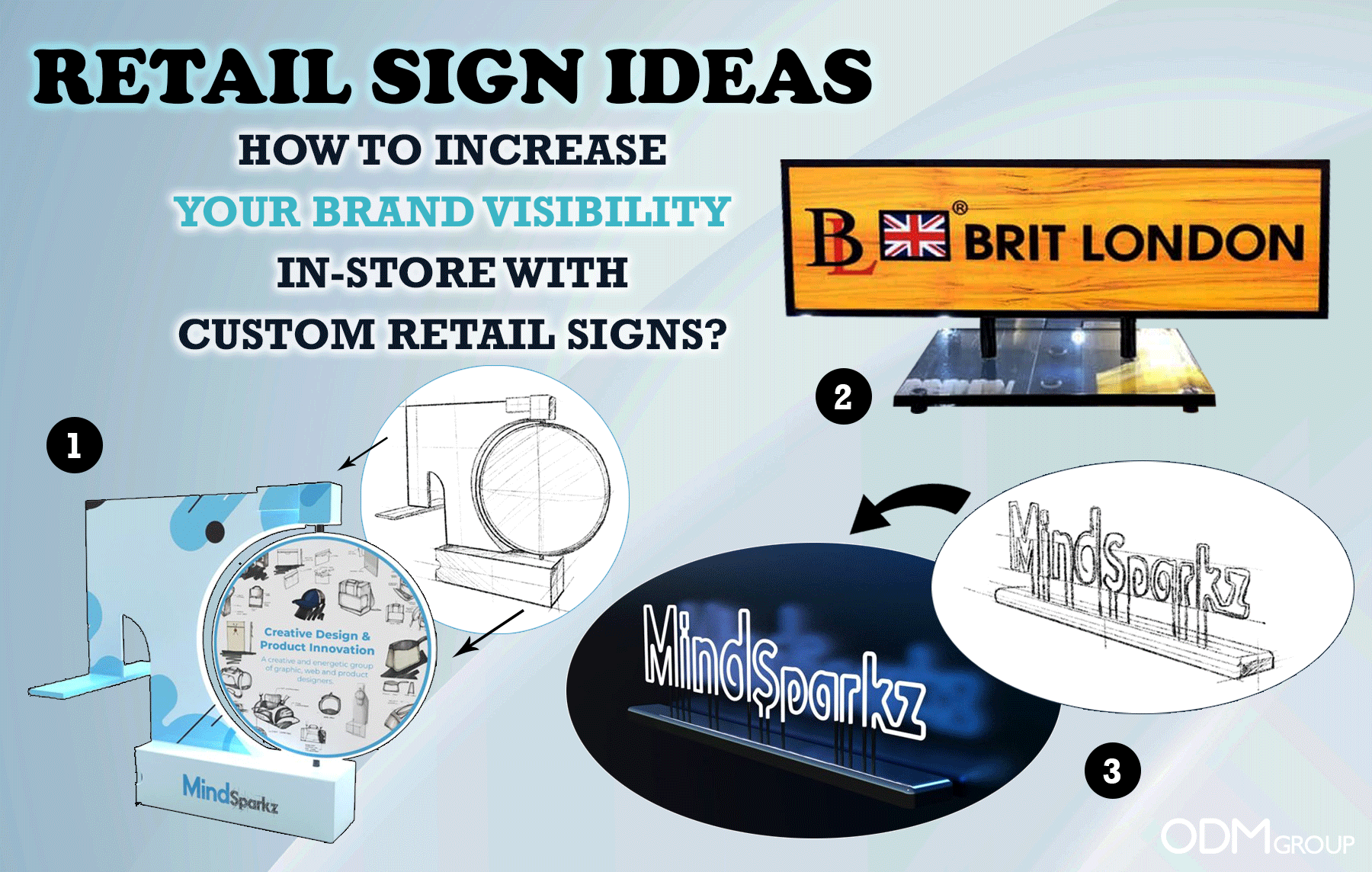
Brit London Signage – Example of an Effective Retail Sign
Brit London, an Asian – based clothing line, proves that we do not need fancy gimmicks to promote a product. Sometimes, all you need is a clear, legible, and attractive design. This is evident in their latest shelf signage found in select department stores.
As we can see, Brit London uses materials that are low-cost but effective. The branding is full-colour print on the Sintra board. The Sintra board makes a perfect material for advertising since it’s lightweight, durable, and has a low gloss matte finish. We can even use this material outdoors.
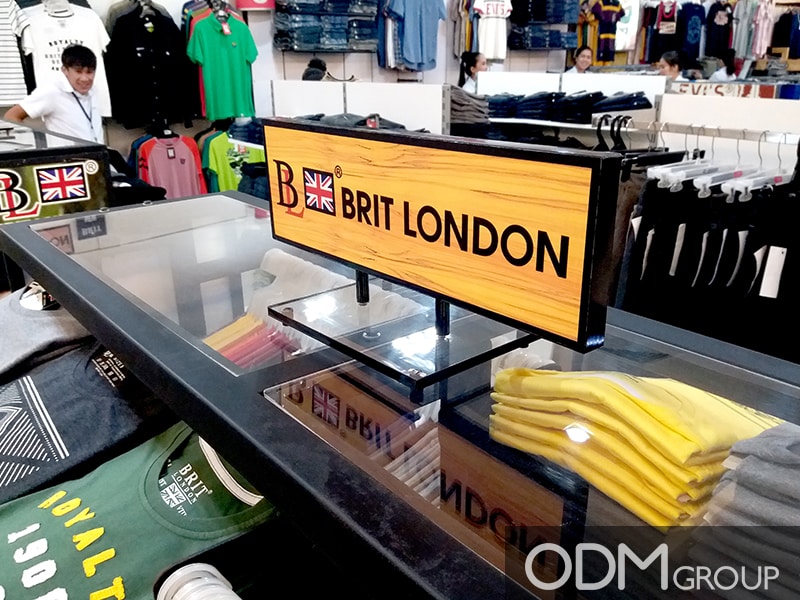
Key Elements of Effective Retail Signage
Creating compelling and impactful retail signage is an art that involves a careful balance of several critical elements. Here are the key components to consider when crafting signage that truly resonates with your audience and delivers results:
Clear and Concise Messages: Your signage should convey its message quickly and effectively. Avoid clutter and ambiguity in your content. Use straightforward language and concise information to communicate your point.
Legibility: Ensure that your text is easily readable. Choose fonts and text sizes that are appropriate for the signage’s location and purpose. High contrast between text and background is essential for readability.
Strategic Placement: Where you position your signage within the store is crucial. Place signs in high-traffic areas where customers are likely to notice them. Consider eye-level placement and make use of endcap displays and checkout areas.
Consider Lighting: The visibility of your signage is heavily influenced by the lighting in your store. Make sure signs are well-lit, and choose colors and materials that stand out under the available lighting conditions.
Maintain Brand Identity: Your signage should align with your brand’s visual identity. Use consistent colors, fonts, and design elements to reinforce your brand. This consistency helps customers recognize and trust your brand more easily.
Compelling Visuals: Incorporate high-quality images and graphics that relate to the message or product you’re promoting. Vivid visuals capture attention and convey information quickly.
Product Presentation: Showcasing your products in action or in real-life situations on signage can help customers visualize how they might use or benefit from them.
Encouraging Action: Include a clear call to action (CTA) in your signage. Whether it’s “Buy Now,” “Explore Our Collection,” or “Limited Time Offer,” a well-crafted CTA prompts customers to take a specific action.
Creating Urgency: Use persuasive language to create a sense of urgency, driving customers to act immediately. Words like “limited time,” “today only,” or “don’t miss out” can motivate quick decisions.
Types of Retail Signage
In the realm of retail signage, versatility is key. Different types of signage serve various purposes, each contributing to the overall shopping experience and sales efforts. Here are the primary types of retail signage commonly used in the industry:
1. Wayfinding Signs
Wayfinding signs are your customers’ navigational guides within the store. They help shoppers find specific sections, departments, restrooms, or exits. These signs enhance the overall shopping experience by minimizing confusion.
2. Informational Signs
Informational signs convey essential details about products, pricing, and store policies. They help customers make informed decisions and feel confident about their purchases.
Likewise, product descriptions, prices, sizing charts, and return/exchange policies are typical content for informational signage.
This shelf talker is a great example of modern and effective informational signage.
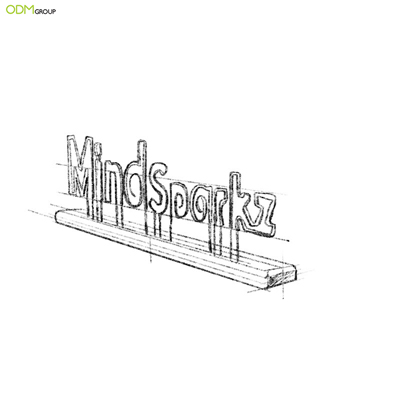
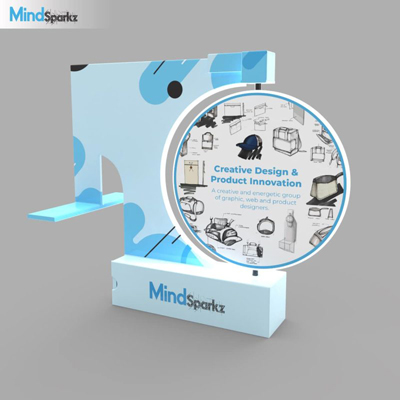
3. Promotional Signs
Promotional signs are designed to highlight special offers, sales, and discounts. They create excitement and encourage customers to explore deals.
They use eye-catching visuals, vibrant colours, and compelling language to grab shoppers’ attention and direct it toward the promotion.
4. Endcap Signage
Endcaps, the shelving units at the end of aisles, are prime real estate in a store. Endcap signage helps maximize the potential of these high-traffic areas by promoting specific products, seasonal items, or complementary purchases.
They often suggest products that pair well with what’s nearby or entice customers to make unplanned purchases.
5. Digital Signage
Digital signage represents the future of retail communication. It involves the use of digital displays to showcase dynamic content such as videos, animations, and real-time updates.
Digital signage allows for interactivity, immediate updates, and eye-catching animations. It’s especially effective in capturing and retaining customers’ attention.
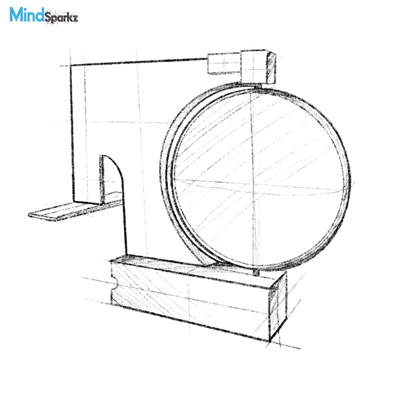

Retail Sign Ideas: Design and Creation
Designing and creating effective retail shelf signage is both an art and a science. It involves a thoughtful process that takes into account the specific needs of your store, your target audience, and your brand identity. Here’s how to go about it:
1. Understand Your Target Audience
Start by understanding your target audience. What are their preferences, needs, and shopping behaviours? Tailor your signage to speak directly to this demographic.
Consider cultural and regional factors when designing signage. Language, symbols, and design elements should resonate with the local audience.
2. Balance Aesthetics and Functionality
Your signage should be visually appealing and reflect your brand’s identity. Use colours, fonts, and images that align with your brand’s style and resonate with your audience.
While aesthetics are important, never compromise on the functionality of your signage. The message should be clear and easy to understand. Use design elements to support the message, not overshadow it.
3. Use High-Quality Materials
Retail signage is subject to wear and tear, so invest in high-quality materials that can withstand the rigours of the retail environment. Durable materials ensure your signage remains in good condition over time.
In addition, the size of your signage should be appropriate for its location and purpose. It should be visible without overwhelming the surrounding space.
4. Consistency in Design
Maintain a consistent design across all your signage. This reinforces your brand identity and helps customers easily recognize and connect with your business. Ensure that colours, fonts, and design elements are in harmony.
All signage should work together to create a coherent shopping experience. This includes wayfinding signs, informational signs, and promotional signs. The design should be complementary and not contradictory.
Get inspired by these signage ideas:
Compared with a normal talker made of acrylic or cardboard, Acecook’s shelf talker is way more efficient in grabbing people’s attention. It is integrated with an LED light to make it even more eye-catching in retail.
Zespri launched its campaign “Feel Alive on the Go” by hanging store signage in Kuala Lumpur, Malaysia.
Aside from its delicious milk teas, the brand keeps its traction by using cardboard signage to promote its drinks.
Corona’s signage was placed on the far end side of the room, yet our team easily spotted the signage. The sign is conspicuous and the brand can be clearly seen from afar.
To Conclude
Mastering retail signage is not merely a matter of convenience; it’s a vital component of success in the competitive retail arena. It is the difference between a mundane shopping experience and a memorable one between a casual visitor and a loyal customer.
By embracing the art and science of retail signage, your business is poised for transformation, visibility, and lasting success in the world of retail.
What Can ODM Offer?
Looking for a company to help you design and create your retail signages? If yes, ODM can help you out!
ODM Group offers a comprehensive solution for businesses seeking effective retail signage. Here’s how ODM Group can help:
